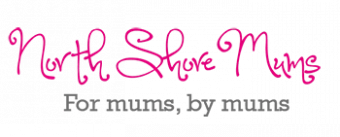Does your baby ever suffer from nappy rash? It can be very painful for them, and cause a lot of distress and unsettled behaviour. Learn everything you need to know about nappy rash… what it is, why babies get nappy rash, and how you can prevent it from happening.
Nappy rash (sometimes called diaper dermatitis) is the term used to describe the inflammation of the skin on a baby’s bottom, caused by exposure to wet or dirty nappies. Nappy rash, it will be red, inflamed, made up of splotches or blotches and sit on the surface of the skin, not in the folds. If not treated, it can develop into blistered, dry, cracked or broken skin. It is a common condition but it can be tender and painful for your little one.
What causes nappy rash?
A dirty nappy is the perfect place for nappy rash to flourish: yes, you guessed it – wee and poo are the main culprits in the nappy rash problem. Leaving a nappy on for extended periods of time can cause or exacerbate nappy rash. Constant moisture, and the rubbing that foreign materials like elastic, plastic and rubber can cause sitting directly against baby’s skin, can make it more irritated.
Nappy rash on other parts of the body
If nappies are too loose, the irritation caused by nappy rash can spread to other parts of your baby’s body, such as the top of the legs, lower back and in the folds and creases of the skin. If the nappy is too tight then it will keep the skin under the nappy wet and close to the wee and poo for long periods of time, which is not good either.
The nasties in your baby’s nappy
Baby poo contains digesting enzymes, which can start breaking skin down if the baby’s skin is left in a dirty nappy for too long. Baby wee, broken down by bacteria contained in poo, aggravates skin with ammonia. An efficient system invented by nature to flush out toxins, but not one your baby needs to sit in for very long. Imagine if your skin was sitting in this mixture: it would not be very happy. Your baby’s skin is not as tough your own: it is new skin, prone to dryness and half as thin as adult skin.
How to prevent nappy rash
- Let baby have nappy-free time – nudie runs are good for their skin!
- If nappy rash starts, stop using plastic covers as they keep the wee/poo close to skin
- Pat the area dry rather than rub dry, so you don’t irritate the skin
- Wash with warm water, no soap and avoid talcum powder as it can be carcinogenic and can get caked in the folds of the skin
- Add more padding at night to soak up baby’s waste
- Use a nappy rash or barrier cream as this will protect baby’s skin from getting (more) irritated.
What makes a good baby barrier cream?
Nappy rash creams are usually divided into two groups: pre- and post-appearance of the nappy rash.
- Pre-appearance, use barrier creams to prevent nappy rash, and
- Post-appearance, use treatment creams to manage the problem
Other common baby rashes
There are so many rashes and skin conditions, it can be difficult to tell one from another. It can be hard to determine the best way to treat it, whether it is a cream for baby rash, a change in products being used, or simply time for it to go away on its own.
Here are some of the other most common rashes found on babies:
- Dribble rash – resulting from excess saliva and often present when teething
- Eczema – itchy, dry rashes that can be red, scaly and have small bumps
- Cradle cap – usually appears on the scalp and presents as greasy, yellow crusts on skin
- Milk rash – red rash that can have white bumps (similar to pimples) on the face
- Inflammation – caused by irritation
- Dry patches – dried out areas that may or may not peel









